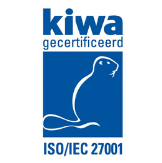If you’re responsible for Identity and Access Management (IAM) in your organisation, you’ll know that successful IAM programs require sufficient resources and funding.
IAM leaders must develop a credible business case to persuade stakeholders to approve the investment.
Common pitfalls
It can be challenging to convince leadership that IAM supports the overarching business objective.
Many IT leaders miss the mark by placing too much emphasis on cost savings, bypassing business drivers in the bigger picture, and failing to obtain adequate buy-in from stakeholders.
Another potential pitfall is a lack of transparency and underestimation of the risks associated with IAM programs. Without ongoing, consistent communication, it’s easy for stakeholders to lose trust and withhold future funding.

How to develop a compelling business case for IAM
A successful IAM program is rooted in the support of stakeholders to whom a business case must be put forward. Gaining the approval and subsequent ongoing support of not only key stakeholders but also the wider user community is important for smooth operations.
Here are 5 top tips for building a persuasive IAM business case:
- Align your IAM objectives with your business objectives and processes
IAM programs can deliver strategic organisational change and IAM processes have a wide impact across the organisation. Identifying and engaging with the right stakeholders to educate them on the vision, plan, and value of your IAM program is an essential first step.
- Educate your stakeholders and user community
IAM is critical for every organisation to ensure each employee has access to the right things they need to do their job at the right time, and that the business is protected against the risks of unauthorised access. Keeping all users informed on what good IAM means for them is key to preparing for the introduction of a successful program and ongoing operations.
- Sustain ongoing transparency
Transparency is key for maintaining credibility for future funding. IAM programs can be challenging and costly to execute, with many potential pitfalls. The presence of proactive project governance and stakeholder communication is vital for success. Miscommunication could place future funding in jeopardy if projects undergo delays or failed go-lives that stakeholders were not anticipating.
- Define Metrics
Identifying meaningful metrics at the start of an IAM project will allow you to set targets and measure the progress against Key Performance Indicators (KPIs) such as efficiency gains, organisational coverage, and an improved security posture.
- Engage with experts
Building a business case is easier when you are aware of your current state. Establishing your current state demonstrates how an IAM program will contribute to each metric over time. The easiest and most cost-efficient way to discover the “unknown unknowns” is to engage with an IAM partner who can collaborate with your team to produce a report on your organisation’s current IAM maturity and help build a roadmap for the project ahead.
If you are considering a new IAM program or would like to first assess your current identity management maturity state, download an overview of our IAM Maturity Assessment to learn about how Intragen’s experts could collaborate with your team to deliver a comprehensive report on your IAM maturity and help you plan for your next IAM project.












